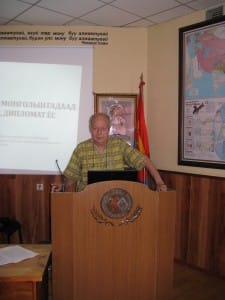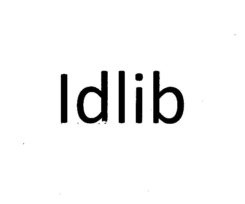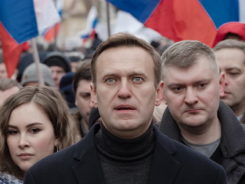
How Chingis Chan’s children clashed with the children of Attil – Changes of global Relations in 13. Century and today – Looking for a new understanding of what could be the ‘middle of the world’. In short: Presentation and explanation of ‘Project 13’. Kai Ehlers, Hamburg, www.kai-ehlers.de
(slightly corrected text of a speech at the 10th Congress of Mongolists in Ulaanbaatar 9. – 13. 8. 2011, Organized by the “International Association of Mongolists” (IAMS). )
Dear friends, welcome to this meeting.
Being not a Mongolist by profession, but a private researcher of Russian Perestroika and it’s consequences for Russia itself and our world in general I am very glad, having the opportunity to talk to You about a question, which is opening somehow behind nearly 25 years of investigating perestroika and behind mere political questions. It is the question of a common Eurasian cultural und mythological space, which may be openening today and in which I see myself, some co-workers of mine in Germany and in Russia more and more involved in the last few years. The longer I worked on this question, the more it changed from a simple question into a grown up project, which seems to me not only interesting in historical respect, but inspiring in sake of rising new ideas about the changes of today, too. This question is: Which was the impact of the Mongolian expansion on the decline of medieval Islamic culture, on the rise of western civilisation, on the rise of Russia in the beginning of the 13. century? In other words: Which was the reason for the division of the Eurasian continent into Europe as the ‘West” and as a “middle of the world” and the remaining part of Eurasia as ‘east’, good for being colonized? How took this place – and, last not least: in what way can we overcome this division today?
For better understanding:
the role of Mongolia today – how it can be seen.
Although Mongolia of today is a very small country with just three million inhabitants, it is destined for playing a significant role in global perestroika, I think, for it may take the place of a neutralizing, the place of a calming factor between world powers, world powers, which compete with each other for influence onto the continent of Eurasia und by means of this for control over the world. I need only to remember to the well known book “the grand chessboard” by the American stratege Sbigniew Brzezinski, who tries very hard to show, that America should look upon the continent of Eurasia as a main claim to keep it’s world hegemony.
I would like to say even more: It is just because of it’s today’s weakness, I think, just because of it’s cultural and ecological vulnerability, that Mongolia can take this place of neutralisation in Eurasian connections
and by this, of course, as I said, influencing global process of today’s change. I understand Mongolian situation of today as a historical lesson: Influence not by size, but by being small; civil power instead of military power. This is something to work on and to discuss about, definitely, I think! Understanding the change of Mongolia’s from a global Goliath in the 13th and 14th century to the David of today, we may find a new idea, how to develop inner Asian, common Eurasian and even global cultural dialogue today.
Epos “Attil and Krimhild” emerged from cultural underground
Facing all this, I translated the old and nearly forgotten Chuvash epos “Attil and Krimkilte” into German language and – together with some co-workers – published it in 2011 in Germany. The Epos tells the story of the king of the Huns, Attil, who died by his love towards the blue-eyed western beauty Kriemkilte. Attil and Kriemkilte, Attila and Kriemhielde are – of course – known from the German epos of the Nibelung – and actually it is the same subject: conflict of east and west, migration of people aso. – but the story of Chuvashian epos is told by the view of the Chuvash. The Chuvash understand themselves as children of the Huns, later named as Bolgar, who settled in central Russia after the death of Attil. The epos was delivered orally from 6th century up to the 19th, when it was fixed finally. In time of Stalinism it was dangerous to death to deal with the epos – because of supposed nationalism. Only after perestroika it was possible to attend to it openly and so it emerged from underground only in 1992.
I came across the epos, when I met Chuvaschian “national” writer and historic Michail (Mischi) Juchma 1992 in Tscheboksary. We had been talking about Perestroika and rebirth of Chuvashian culture – when he suddenly pulled a script out of the depth of one of his cupboards – handwritten – and showed it to me:
Attil and Krimkilte – our forgotten Epos, he explained. O yes, I know, this is possibly part of the Nibelung – ‘our’ epos, I wondered. And so we sat, looking at each other: a son of the ‘old Huns’ (as he explained himself) – and a son the ‘old Germans’ and we understood, that this was a meeting of east an west in a very special sense, will say: we felt, that the story, the different epics about Attil where not property of the east and not of the west, but common Eurasian culture, only told from different sides – with the eye of the Huns respectively with those of the west.
It was then, that I decided to translate and to publish the Chuvashian epos – but it still took a long time. We succeeded to publish the epos in Chuvashia in 2001 in Chuvaschian language – not without my participation, I ought to say – then in Russian language 2006, in Armenian language 2007. Only then, in spring of 2011, we succeeded to publish a German translation in Germany. But all of us – I mean Chuvashian participants as well as German ones, who were involved in that project – are more than happy now, that we succeeded to publish the translation finally, because the translation of this epos into German defenitely proves to be a big step towards a closer dialogue between us, between west an east. By this epos can be shown, can be practically and openly experienced, that Eurasian historical deliveries can’t be divided into “national” or ideological pieces, like, for instance, German NAZIs did with the epos of Nibelung. Obviously the Chuvasch epos of “Attil and Krimkilte” and the Nibelung are only different epical variants of a common history.
It has been very interesting to find the differences – and on the other hand the coincidences between the different ways of telling the events: as a story of revenge, for instance in the epos of Nibelung – as a story of unhappy love of a great leader, who perishes by this, in the Chuvash version.
I can’t go into details here, of course – You may read about these comparisons in our scientific commentaries in the book. They explain, what was the situation of the time of Attil and in what respect western and eastern tradition differ, in what respect they equal each other. Investigating the migration of people in 4th and 5th century, which is bound to the name of Attil, we understood, that the development of today’s Europe and the West, too, cannot be explained without the phenomenon of Attila and his surroundings – for they fought the Roman Empire, they brought feudalism to the western European people and – getting to know the use of horses by Attila and his Huns – the early European people developed European culture of knights.
All this is very interesting, exciting and worthwhile to go further into details and to investigate more intensely. And, of course, I would like to tell You the Details, too, how we were welcomed with the book itself and with the idea of going further into the common Eurasian epical space after publishing the book and what proposals already came out of it – in Chuvashia, in Kasan, in Nowosibirsk and at home. Truly – it looks like opening a treasure case, which has been hidden for hundreds of years.
What we learned by investigating the Epos ‘Attil and Krimkilte”.
But in sake of being short in this text, I will go further now to describe,
how “project 13” developed: Investigating the epos “Attil and Krimkilte”, especially the time after the death of Attil and the retreat of the Huns, which is described in the epos, too, we came across the rise and the fall of Bolgarstan – this empire founded by descendents of the Huns in the centre of today’s Russia. Bolgarstan, like the Epos about Attil itself, is nearly forgotten today, if we don’t talk about specialists. But it was Bolgarstan, that grew up to the strongest Empire in the area between Volga, Ural and Caspi sea after the retreat of the Huns, when Attila had died. And Bolgarstan was strongly related to the Caliphate of Bagdad, the capital of the Islamic Empire, which – after Mohamed – had developed as the leading culture in the western hemisphere of that time. And when we started to investigate Bolgarstan, we found, that not the Russian stopped the first wave of Mongolian conquerors, but the Empire of Bolgarstan, after the Russians had been beaten at the river Kalka.
But the most interesting and overwhelming was: We found, that there is a very short time, sort of a corridor at the beginning of the 13th century, which decided the future development not only of Eurasia, but of our world as a whole up to today – beginning with the defeat of the Russian at the Kalka in 1223, proceeding with the long and bloody war between Mongols and Bolgarian people from 1224 up to the total destruction of the Bolgarian Empire 1236. Only after the destruction of Bolgarian Empire – forming sort of a ‘bottle neck’ on the way to the west – the Mongolian troops could go further to the west – beating the combined western allies at Liegnitz 1241 and then destroying Bagdad 1258.
And going into the Details of local history, we came across another surprise: We found, that there may be possible new answers to the question, why Mongolian troops did not occupy the western part of Europe, although after the battle of Liegnitz the European country lay before them totally unprotected. Why this? The majority of historics, at least western ones talk about some riddle, which could not be explained. Leading assumption is up today, that Mongolian leaders had to return to Karakorum, because of the death of their leading Chan. – Investigations following the history of Bolgarian Empire are revealing another possible reason:
Exactly in 1241 Bolgarian people went into surrection against Mongolian invaders, which meant, that Mongolian troops, going further than Liegnitz, would have been cut off from their supplies. So Mongolian leaders may have decided to retreat and in a second step preferred going south conquering and burning Bagdad, which was a “closer enemy” to them than the western counties of todays Europe. There are some new archaeological testimonies about bloody battles between Mongols and the Bolgarian resistance near Pensa 1241, which should be recognized. And it should be recognized too, that it seemed to be more important for the Mongols to fight the highly developed Islamic countries than the relatively undeveloped countries of today´s Europe.
To sum up: The events round about the two dates – 1241 Liegnitz and 1258 Bagdad – changed the relations between east and west fundamentally: The Islamic Empire of middle age decreased – western Europe increased, took the place of the Caliphate as new global Hegemon, Russia grew frontier between East an West. The middle of the world turned from the centre of Eurasia to its utmost western corner, from where the whole globe was colonized. – And now? This question occurs evidently today, of course. There seem so work some long term historical waves, what may be understood better, if we understand, what was the origin of earlier waves, how they followed each other and – last not least – in what way they are present in peoples remembrance.
Necessary to add, that the change in 13. century can’t be understood as a consequence of Mongolian invasion only. There have been reasons within the Islamic world, within the development of western part of today’s Europe and within the situation of late “Kiewski Rus”, too. These processes had already been accelerated, when Mongols destroyed Bolgarstan, when they spared Europe and when they cooperated with the Russians in a sort of junior partnership after destroying Bolgarstan. Shortly said: There was a kind of collectivism of the Islamic “Umma”, which had stopped it’s inner development in contradiction to the wide spreading expansion of the empire; there was a rising of individualism, diversity and variety in western Europe on the other hand as a consequence of Christian believe and there was sort of chaotic space in the centre of Eurasia after destruction of Bolgarstan and late, already deceasing Kiew, in which Moskowien could develop as sort of a buffer zone between Mongolian Empire and western Europe.
These and rather a lot more tendencies had developed. They have to be considered, if one wants to understand, why and how the division of the Eurasian continent into Western Europe and the “remaining rest” took place after the new establishment of the Mongol empires, of course, but one fact has to be fixed without any doubt: If the Mongolian conquerors had n o t destroyed Bolgarstan first, if they had n o t spared Europe from occupation and at the same time destroyed Bagdad, the inner dynamics of Eurasian continent would have developed in a very different way. And this means, the world in whole would have developed in a different way.
Going further with Epos of “Yltanpik”.
All these events and tendencies, which occurred by the confrontation of the children of Attil and the Mongolian conquerors in 13th century can be shown by another Epos, which, too, is delivered by Chuvashian folklore. It is the tragedy of Yltanpik, who was the last Zar of Bolgarstan in the beginning of 13th century and who fell together with the fall of Bolgarian empire. The epos tells the bloody story of the war between Mongolian conquerers and Bolgarian defenders in the time from 1224 to 1236, beginning with the description of life in Bolgarstan, ending with the death of Yltanpik and the destruction of Bolgarstan.
Necessary to say: The Epos about Yltenpik is not the only subject, which was emerging before our eyes, when we started to look into history, legends and myths before and after the death of Attil. It´s an amazing number of Eurasian epics, legends, myths ore just oral remembrance, which is emerging, if you once begin to look for them:
– There is a more general figure named „Ulyp“: We came across this name, when we were working on the text of „Attil and Krimkilte“. Further investigations in Cheboksary in April 2011 have showen, that there is another, even older epos, compiled by the late Chuvashian author Sijanin. The figure of “ulyp” could be somehow similar to the mythological hero of the western European figure of Arthur.
– There is an Inguschian Epos about „Narti“, newly found by a young woman named Anna Kusnetsova, who contacted us.
– There is the Geogian Epos byRustaveli about the “man in tigershape”,
– there are motives like the tibetian-altaian Cheser Chan, like the Turkish Dede Korkut, a Turk circle of legends a.s.o.
I stop here – because we are only beginning, but a whole cosmos of common Eurasian remembrances, although shattered into different names, aspects, epics, legends and stories is already opening. We decided to pick them up step by step, while we are dealing with Yltanpik. What we see today, may be called a re-awakening of Eurasia – freed from animosities, divisions, prejustices, which have been separating the continent into civilized and uncivilized, developed and so called underdeveloped areas, into polarities of western enlightment and eastern mysticism and so on and so on. Instead of that there could grow a new esteem of what is the original, the actual heritage of Eurasia, if it is not cut into national or ideological pieces. I would call this heritage: mutual enrichment by cultural interaction of variety. That may be the message rising from a continent, which is remembering not only its history, as it can be seen by outer facts, but the cultural origins and even spiritual powers behind it.
Focussing the next step: Epos about bolgarian Zar Yltanpik.
But this is a glance into tomorrow: As to the next step we found, that it will be useful and necessary focussing on the epos of Yltanpik, which means, working on, talking about this small corridor of time at the beginning of 13th century, when the sight of Eurasian continent changed in that gigantic measure!
Work on the text already started. Behind the epos itself we want to show:
1. The clash in the beginning of 13th century:
– Short story of Bolgarstan before the arrival of the Mongols.
– Story of the wars between 1224 und 1258.
2. Consequences of Mongolian expansion:
– Destruction of the Islamic Caliphates.
– Rise of Europe.
– Development of Russia as „buffer zone“ in the triangle:
Moscow-Kasan- Chuvashia (late Bolgarstan).
3. The events of 1224 – 1241 – 1258, seen with Mongolian eyes.
4. First glance to the common Eurasian mythological space as a future question of investigation – Ulyp/Gral.
5. Scientific informations: Chronology, names a.s.o.
Inviting for cooperation
So round about the time of Yltanpik and it´s consequences there is rising a lot of questions to the children of Attila, to those of Great Bolgarstan, to the people living at the Volga today, to Russian, especially Sibirians and people of far east as well as to western historics – and to ourselves, of course. That is one side and some cooperation already started. But there is an equal lot of questions towards Mongolian scientists and to scientists, who deal with Mongolian history, maybe even more, because from that side very little is known in the West, at least at us, concerning the events in the beginning of 13th century. But there is a lot to be found on the Mongolian side, too, I am sure.
Important to emphasize, that we – my-coworkers and I – are not just interested in differences of views, but more: We think, it´s time, I mean, it is now possible and it is necessary to bring forgotten, repressed, even suppressed memory of Eurasian history into the light of today’s changes. This means collecting, analysing and publishing forgotten or repressed historical views, legends, epics, myths and even stories and tales, which have been delivered only in oral way or had to survive in political and cultural underground. So this is, what we want to talk about at this congress, hoping to find co-workers, who are interested to go together with us in this project, beginning with the epos of Attil, which only opened a possible discourse, continuing with Yltanpik as the very next step of concrete investigation. Seen from both sides, that means, seen by western, Bolgarian, Russian, and western European eyes as well as by the eyes of Mongolian (ore at least Mongolists) we may find a new understanding, of what was going on at that short time of history at the beginning of 13th century – and which may be the consequences, which have to be kept in mind in respect to today’s global perestroika, when the “middle of the world” seems to be changing again.
Kai Ehlers
www.kai-ehlers.de
There are three books of mine in German language, dealing directly with questions, which are subject of “project 13”, too. The can be ordered by my internet-address.
• Asiens Sprung in die Gegenwart – Entwicklung eines Kulturraums inneres Asien, Pforte 2006, 10 € (plus Porto)
• Attil und Krimkilte, Das tschuwaschische Epos aus dem Sagekreis der Nibelungen, Rhombos, 2012, 42 € (plus Porto)
• Kultur der Jurte, Probleme der Modernisierung des nomadischen Lebens. Gespräche mit mongolischen Partnern. 14,80 (plus Porto)




